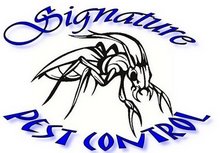
Earwigs are primarily nocturnal, feeding at night. They are scavengers, eating primarily dead insects and decomposing plant materials. Some earwig species are attracted to lights.
During the day, earwigs will seek shelter under organic matter such as mulch, pine straw, leaf litter, and other debris. Earwigs prefer dark and damp areas like under sidewalks, and stones.
Earwigs eat live plants and can do damage to field crops.
Earwigs are found in homes and can get in through entry points like doors and windows, and by going up the foundation.
Their populations build up around foundations. Earwigs produce large populations rather quickly and are often a major problem in new subdivisions.
Earwigs live in habitats that also harbor centipedes, sow bugs (roly-poly), and millipedes.
During the day, earwigs will seek shelter under organic matter such as mulch, pine straw, leaf litter, and other debris. Earwigs prefer dark and damp areas like under sidewalks, and stones.
Earwigs eat live plants and can do damage to field crops.
Earwigs are found in homes and can get in through entry points like doors and windows, and by going up the foundation.
Their populations build up around foundations. Earwigs produce large populations rather quickly and are often a major problem in new subdivisions.
Earwigs live in habitats that also harbor centipedes, sow bugs (roly-poly), and millipedes.
In a season, females reproduce up to 20-60 eggs laid in burrows (called chambers), 2 to 3 inches beneath the soil.
Most species have one generation a year, over-wintering in the soil. Both adults and the young require moisture to live.
Most species have one generation a year, over-wintering in the soil. Both adults and the young require moisture to live.





